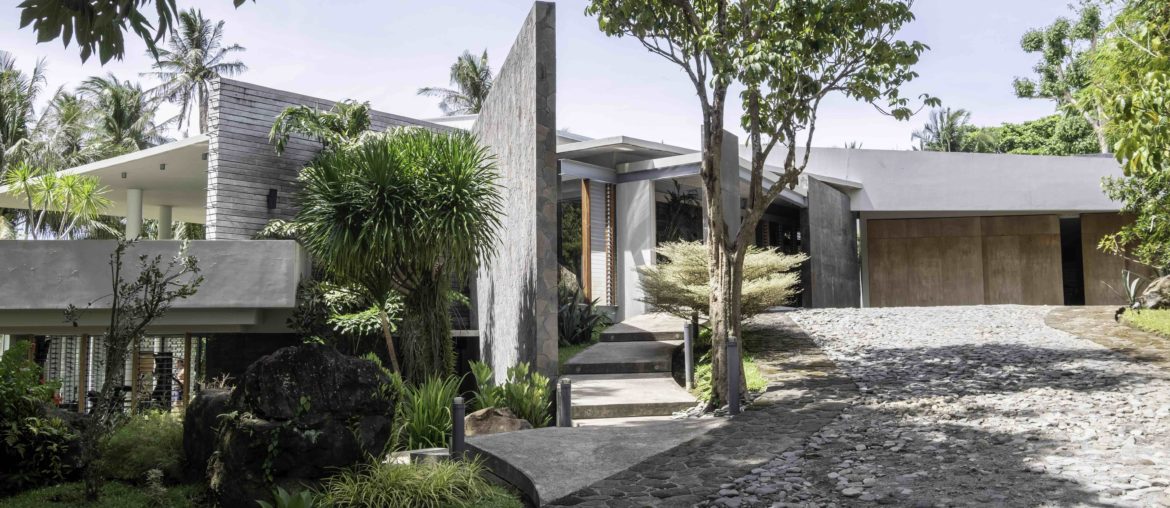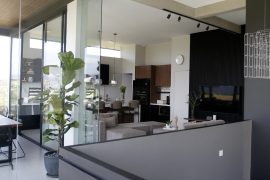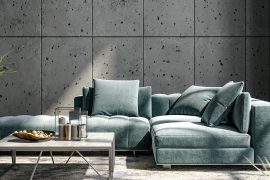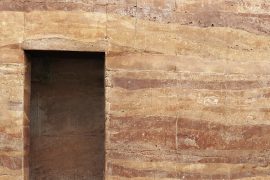In a previous article where I interviewed Architect Edwin Uy of EUDO about his thoughts on architecture in a post-Covid world, he mentioned critical regionalism. He said,
In this approach to architectural design, the components of the environment and the natural landscape or of one’s local culture are integrated into the architecture of a building, instead of utilizing the typical global elements of one type of architecture.
He and I have talked about this over the last decades and I have seen that despite his love for western design, he uses his knowledge in vernacular architecture designs to build structures that are right for this climate, using local materials where he can, and showing a clear understanding of the culture of his clients.
I asked him to go deeper about this topic in this follow-up interview.
Please elaborate on critical regionalism.
For me critical regionalism, which started in the 70s, is finding ways to make the buildings and urban landscapes revere the details of a particular region, the materials, and what that environment calls for.
Basically, architects have to be aware and be conscious of what we have in our country or in our region. It becomes complex because we have thousands of islands and each region can have something particular which one can use and apply in one’s architecture or design. In architecture, it could be the materials that the locals use which are considered in the design process, and the environment when it comes to planning the technical aspects of a project.
How do you see critical regionalism manifested in buildings?
This can be applied in a number of ways but it is always best to start from where the project begins—from the concept.

Oftentimes, my clients show me photos of houses they aspire for. Usually these are photos of buildings found abroad that they saw on social media. There is nothing wrong with this but almost always, the photos are projects found in Europe or the Americas. I hardly encountered a photo of a local reference.
In order to be able to successfully see the project through, I have to intensively discuss with my clients about the reasons for wanting these references. What in particular attracted them to these buildings? Once I have the answers, I tell them the pros and cons of these designs if these were built in our country. I show them that transplanting a design from a country, especially one with different weather conditions to our own for example, would not automatically work.
In the discussion, I strive to make the clients understand the importance of critical regionalism. Once they get it, it will be easier to apply these solutions into a project because the elements are not something you can easily just add on an existing framework of design. It is the framework itself.
One cannot stay true to this concept when it is a last-minute thing. It wouldn’t work. For example, adding a facade treatment made out of a local material as an afterthought just to say that it has something local incorporated into the design is not critical regionalism.
Critical regionalism is something incorporated into the concept itself.
Please take us through your design process.
Concepts for my projects were mostly drawn from the owners, their lifestyles, their culture and of course, where the projects were to be located.
It varies from project to project. But one thing common to all my projects is the environmental and climatic factors, which are similar throughout our country. Basic things like natural lighting and ventilation are crucial in every building or structure. We live in a tropical environment so we have to adapt and not force something into the design just because.

We can also examine how structures were built when electric power was not available yet. We found ways to deal with this constraint and created solutions that would make our lives more comfortable. These solutions we can definitely use and apply now, together with new forms of technology.
I feel sometimes that we look so much into the future of technology that we forget what was done before. We should look at what worked for centuries, investigate these, and take it forward into the future.
The use of local materials is also fairly easy to apply. I check out the locality even before coming up with a concept. Ocular inspections are very important. I survey the site and also study the village, the town or the city where the structure will be built. This is how I am able to consider regionalism in a broader perspective.
I try my best to integrate all these elements into the design process, and even into the building process.
How do you think design will develop?
I love design in general.
Design in furniture and lighting is much more established in Europe. Although if you look beyond the mid-century style, these designs came from the United States which somehow influenced Europe and hopefully Asia in this century.

Design is already in its right place in our continent. We are seeing that more attention is given to design now than ever before. In the Philippines, we are now investing in creative industries and seeing fresh ideas being applied to traditional crafts.
For me, it’s not a question of how to combine western and local design because I just look at the value of the design regardless where it is coming from— the west, Asia, or from our own country.
Although I have to admit that I much appreciate how western designers are able to come up with such wonderful pieces of furniture.
I do not think of myself as less of a Filipino because I was trained by European industrial designers. We learn their trade, they learn ours too. A number of European designer furniture brands even have their pieces made in Cebu for example. It is just a wonderful exchange of designs that speaks so much for the authenticity of design.
You use a lot of western design brands in furnishings. Why?
Because of my love for details and because I appreciate well-designed objects that are well-made. I even take so much inspiration from these objects for my architecture. Truth be told, I hardly take reference from existing forms of architecture.
The craftsmanship. We still build in the old way. If you notice, most of our structures are still being done by human labor. During this pandemic where I am stuck in Switzerland, I have noticed that most of their construction work are all done by machinery. Only a few people are involved in a project. Perhaps this is because of the high cost of labor. On the other hand, we have so much labor available in our country. This is something we can take advantage of. It’s good for the people involved as we learn from each other. There is an exchange of knowledge in building techniques and local know-how and skills. What’s more, it’s good for the local economy.
Our craft in weaving is also something I have applied in my past projects which I still wish to incorporate as much as I can. Ever since I started weaving an architectural facade in a hostel in El Nido, I have much more confidence in applying such techniques in my architecture. One can easily clad with woven panels but seeing the process of weaving slowly on site adds so much value in that particular structure. The value of our craft.
EUDO’s Showcase for Critical Regionalism
House No. 17 from EDWIN D. UY, architect on Vimeo.
One of EUDO’s showcases for critical regionalism is House No. 17, which won a Merit for the Futurarc Green Leadership Award 2020.
This property is located at the foot of Mount Hibok-Hibok in Camiguin. Ensconced in the embrace of a lush rainforest, the angular lines of the house catch the sea breezes and the fresh mountain air. To take advantage of the winds, Edwin installed his signature jalousie windows (in this case, floor-to-ceiling) to line passageways and walls in the house. House No. 17’s excellent cross-ventilation, which is integrated into the concept, is possible because of a clear understanding of prevailing breezes and the surrounding topography.
In an interview with Bluprint, Architect Uy said, “House Number 17 was designed to respect the existing terrain and landscape,” Uy relates, “and we did as much as we can to retain the natural boulders of the site. We also used the volcanic rocks on-site to create the facing materials you can see in the house, except for the concrete floors, which are finished with Sika EpoCem, which gives a highly polished white marbled effect to contrast the browns of the local stone.”
Read the full article here.
Interested to see more articles on architecture and design? Click here. Better yet, subscribe to this blog to get fresh, new articles in your inbox.




